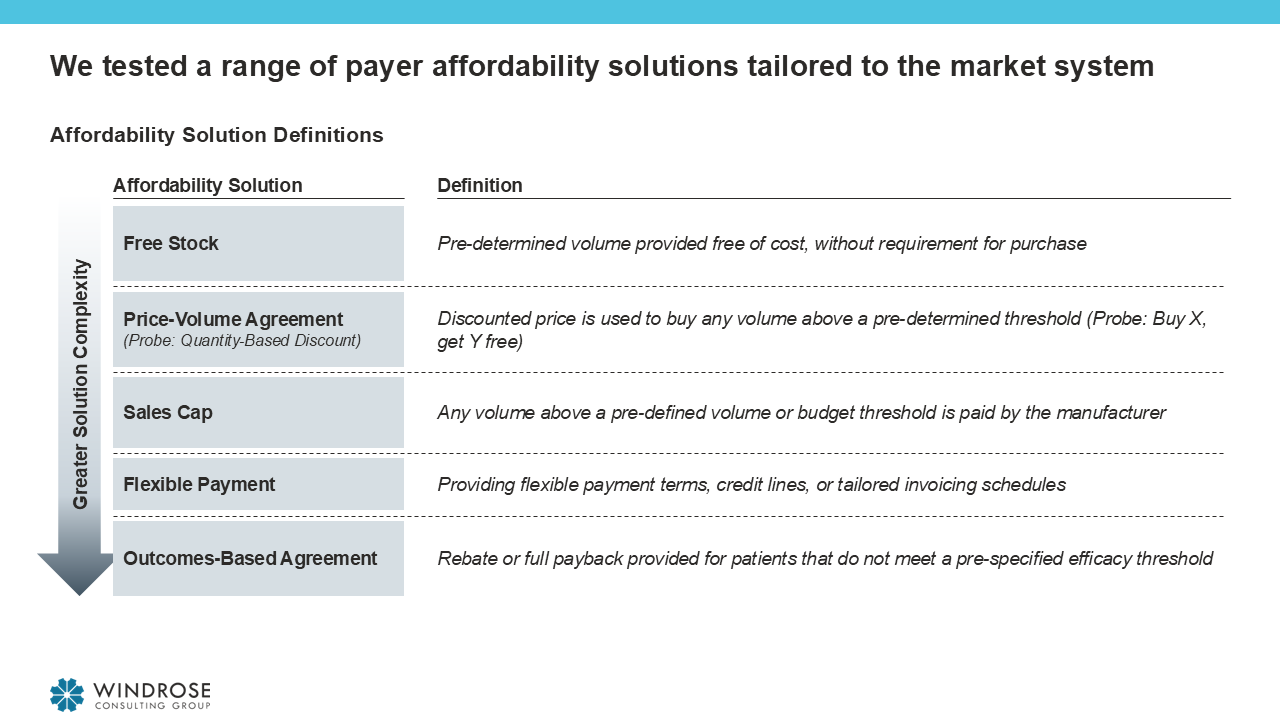Case Study: Identification and design of affordability solutions for an innovative treatment for sickle cell disease
Project Objective
Globally, markets with the highest prevalence of sickle cell disease include some with fragmented and / or extremely budget constrained healthcare systems, including markets in-scope (e.g., Brazil, Egypt, India, Nigeria, and Pakistan)
The client developed an innovative treatment for sickle cell disease (SCD) and wanted to assess the payer and self-pay landscape, understand barriers to funding / purchase decisions, and identify affordability solutions to support access to Product X across markets in-scope
Windrose Approach
First, we conducted discussions with country teams to understand the SCD landscape and local funding challenges, and identify any affordability programs that have been implemented in the past
We then conducted additional secondary research to identify the stakeholders that would fund Product X (i.e., national / state governments, NGOs, patients) and proposed potential affordability programs based on different archetypes
For markets where governments would be reluctant to fund or funding infrastructure is lacking, we assessed patient affordability challenges and the impact of the proposed solutions, via patient and healthcare professional (HCP) surveys in Nigeria and Pakistan
In all markets, we conducted five, 60-minute IDIs with payers / non-government organizations (NGOs) to assess the impact and feasibility of proposed payer solutions
Impact
We identified patient challenges related to SCD treatment, willingness to pay, and the impact of different affordability / accessibility solutions on the likelihood of consumers purchasing Product X
For payer / NGO funding pathways, we assessed routes for access, potential population restrictions, and the likelihood of funding
We then determined the viability of different payer solutions (e.g., price volume agreements, flexible payments, technology transfers, etc.) to address payer affordability challenges, and the feasibility of implementing such programs within the constraints of different market systems
We developed market specific roadmaps that detail recommended stakeholder engagement, evidence generation, and affordability programs based on different funding channels
Finally, we extrapolated our findings to develop a global framework to help identify affordability solutions based on different market characteristics and considerations for implementation
Figure 1: Affordability Solution Definitions
Figure 2: Affordability Solution Prioritization Framework



